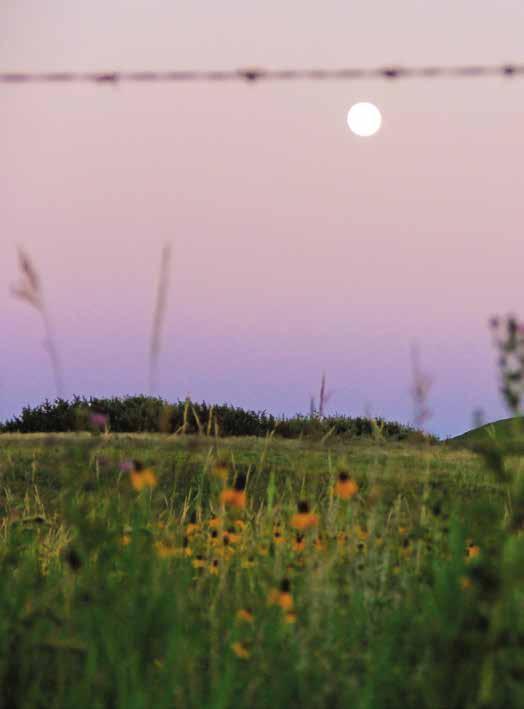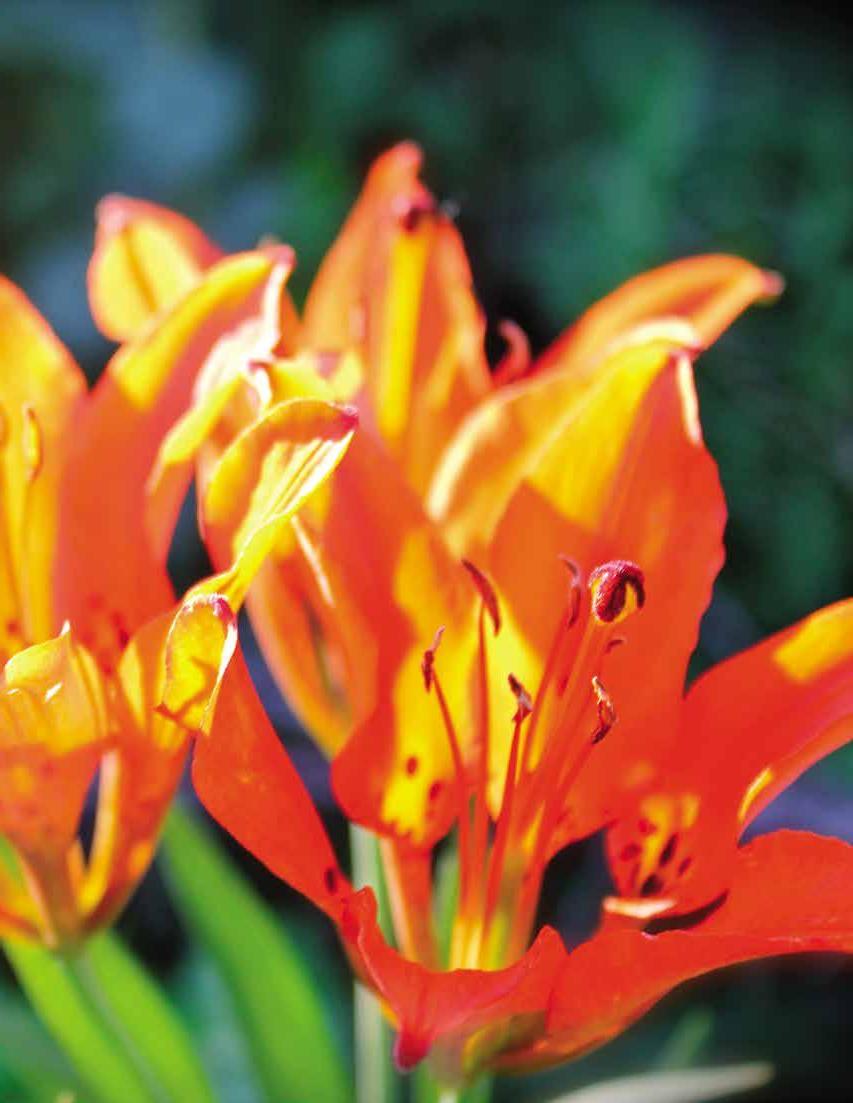[sense of place]
A CASE OF NORTH DAKOTA NATURE PRESERVES By Jennifer Strange
It’s a right bison jam—massive brown beasts in every direction. The first ones are down in the waterhole to the left of the car.
A small pool with frozen edges, it resembles a silvery-gray theater in the round, spindly black treetops forming a roof overhead. Three huge, brawny mounds shoulder each other. Their heads are bowed, muscular black tongues working the pond’s surface just now thawing after October’s early freeze. We drink in the moment. My husband Terry and I have brought our visiting friend Liz on a day-trip to the Theodore Roosevelt National Park North Unit, a 24,000-acre reserve that stretches through the Little Missouri Badlands in the southwestern quadrant of North Dakota. Liz has traveled to the High Plains from her home in Washington, D.C., to see our new apartment and to witness for herself the booming Bakken oil field region. The two of us grew up six hundred miles southeast of here, in Sioux Falls, South Dakota, and have been best friends for exactly three decades. For the last two of those decades, we’ve lived a continent apart, she on the East Coast, I on the West. Terry and I shaved about 1,400 miles off of that distance last year when we relocated from southern Oregon to the cowboy town of Killdeer, North Dakota, a centuryold outpost, population 800, that sits along Highway 22 in the foothills of the historically battle-worn Killdeer Mountains, right on the eastern border of the Bakken shale formation. Because most Dakotans—especially those of us who have left the area— keep tabs on our similarly named sister state (as if somehow we’re all related), Liz and I had been closely monitoring North Dakota’s oil boom for years. At first we were shocked by how much media attention our neighbors were getting; after all, this was the vast and sparse Great Plains, the “Great Flyover,” the place we left because there was nothing going on. Gradually, though, our taunting gave way to genuine curiosity and we brought our husbands into the conversation: Could a person (perhaps Terry) earn back the retirement savings he’d lost in the Great Recession by working in the oil patch for five to ten years? Could he do it without risking health and safety? Could a freelance writer (perhaps me) survive and even thrive on the prairie? In early 2013, Terry and I decided to take the chance. He landed a job with a fourth-generation, locally owned transportation company, bravely moved himself and a carload of stuff across the country and has been happily driving a water tanker ever since. Seven months passed before I got all the loose ends tied up in Oregon, secured us an apartment, and joined him in
6










